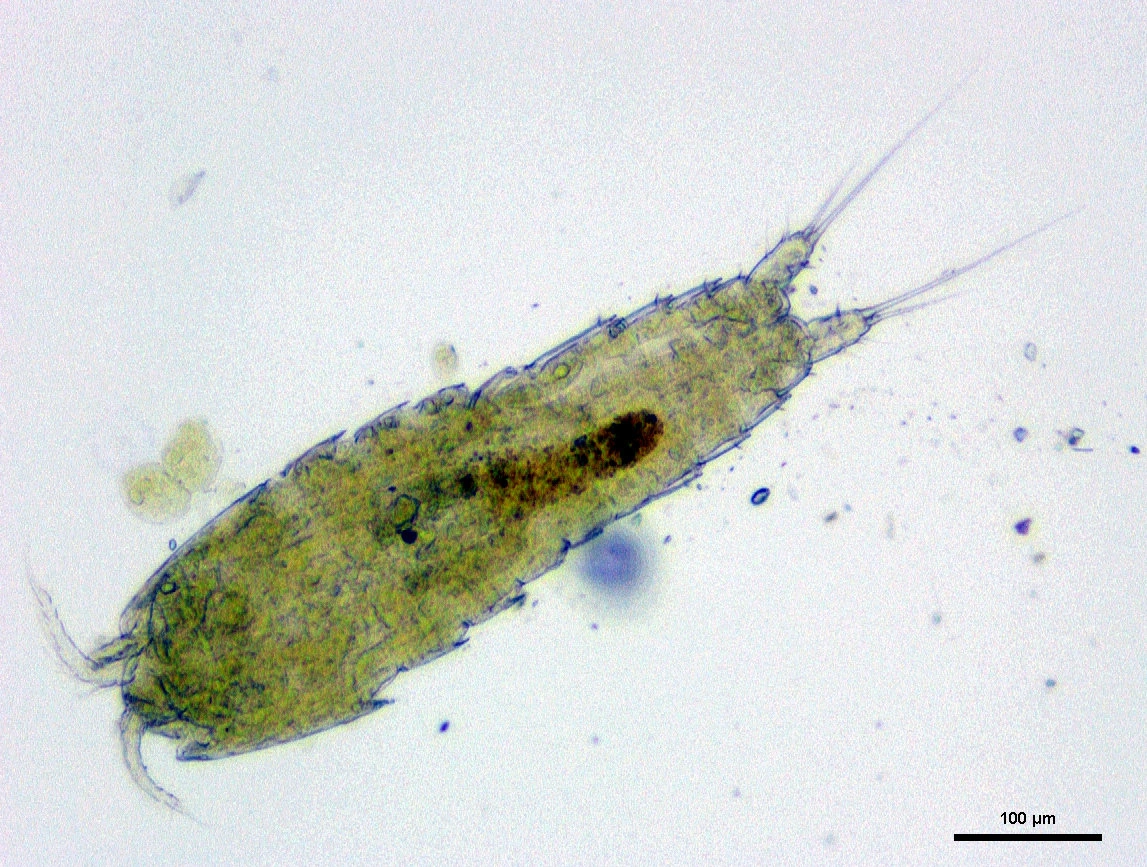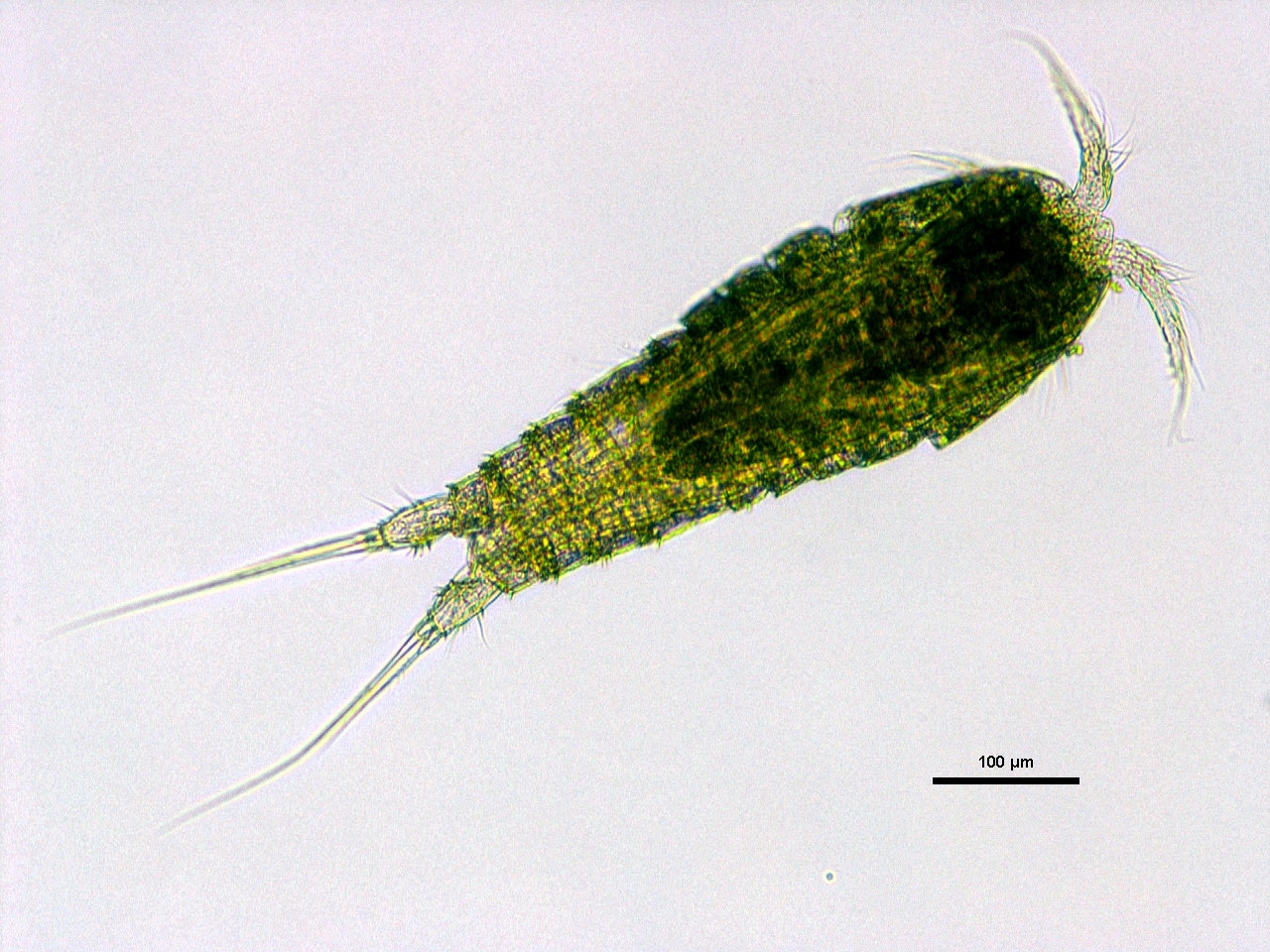Maraenobiotus brucei
Maraenobiotus brucei may vary due to morphology. The majority of records are from the Svalbard Archipelago.
Key characteristics
Both exopod and endopod in the first leg of Maraenobiotus brucei are 2-segmented, while the legs 2–3 has a 3-segmented exopod and a 2-segmented endopod. The last exopod segment of leg 2 has no inner seta, while the last exopod segment of leg 3 has one inner seta. Its rostrum is reduced. The operculum has 6–10 small spines (in males less: 4–7), while the caudal ramus is almost twice as long as wide. The antennule has eight segments.
Female: Length 0.62–0.76 mm
Male: Length 0.50–0.52 mm
Ecology and distribution
The majority of records of M. brucei is from the Svalbard Archipelago, while there are only two records from the Norwegian mainland (Eastern and Northern Norway). It is most common in rather small freshwater habitats like ponds, puddles and streams, but it may also be found in the littoral of large lakes. These localities may be surrounded with mosses and with small stones, silt, mud, mosses, sand, clay on the bottom. Most of the findings are from the lowland. Maraenobiotus brucei has a Palearctic and a Nearctic distribution.


